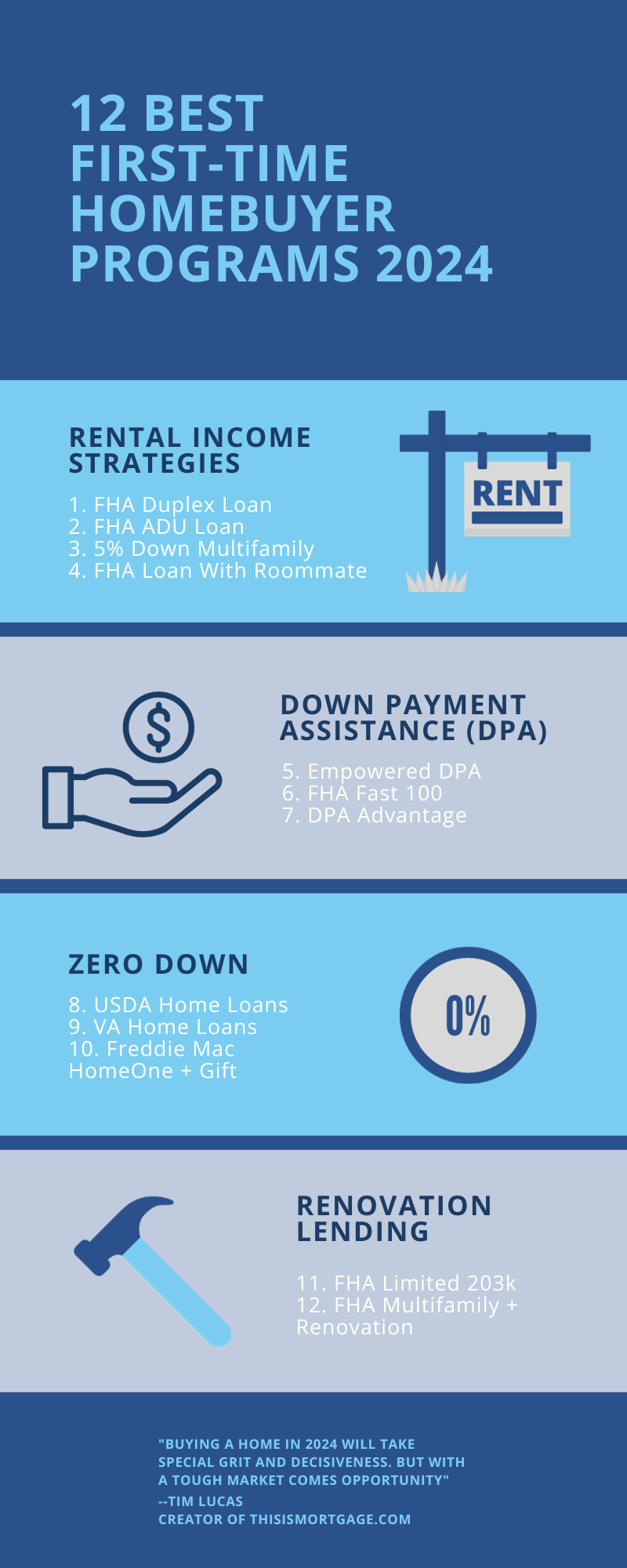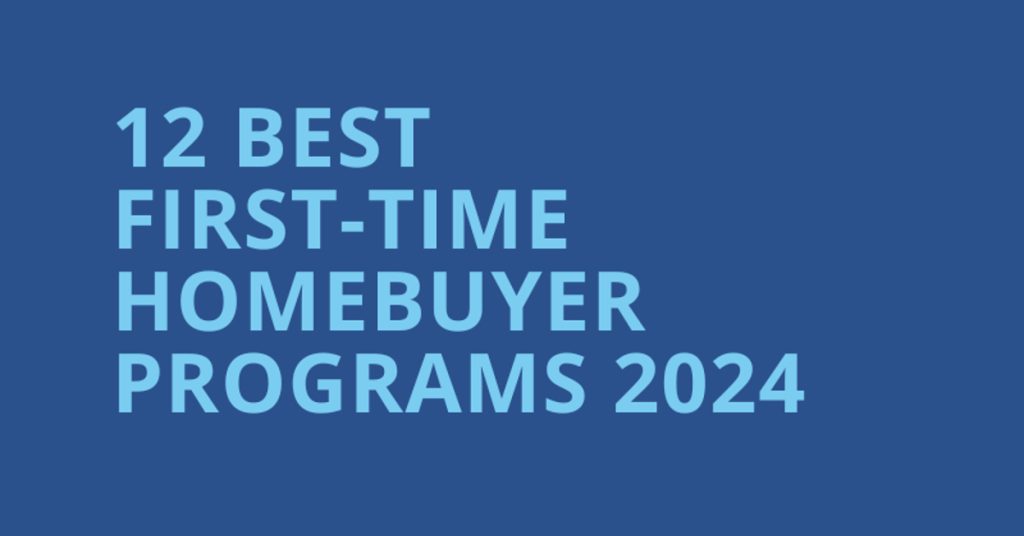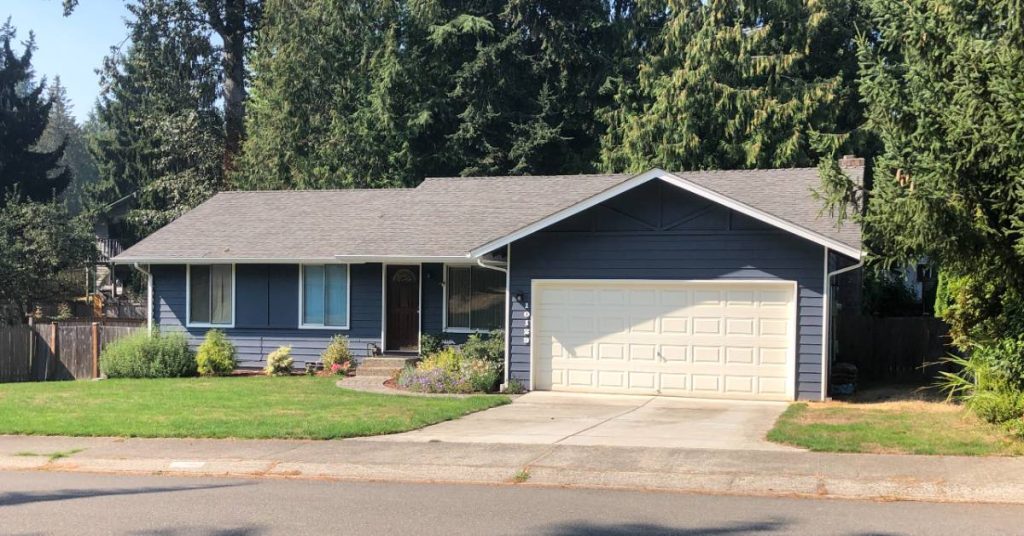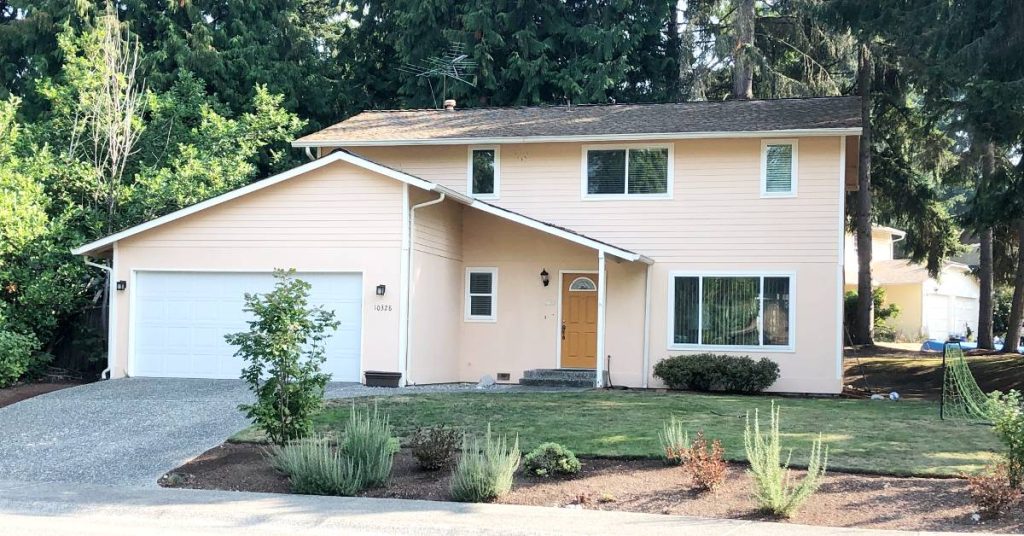Buying a home in 2024 won’t be a walk in the park, but then again, it never has been.
It’s always taken decisiveness and a certain grit to buy a home. 2024 will just take more of it.
And that’s a good thing.
In 2020 and 2021, there were as many as 50 offers on every house. Buyers were giving $100,000 bonuses to sellers. A typical first-time buyer had no chance.
Then 2023 changed that. Rates hit 7% and marched upward to 8%. Many assume this is “bad,” but high rates are eliminating competition like few times in history.
Start your 2024 homebuying journey now.
If rates went back down to 4% or even 6%, a new frenzy would begin and first-time buyers would be beaten out by home seller-buyers with half a million in their pockets.
Two-decade-high rates could be a very good thing.
While everyone waits for “the crash” that will never materialize, you’ll take action, leveraging the market’s worst aspects to your advantage.
In 2024, fewer buyers remain. Sellers are cutting prices. They may even kick in closing cost assistance to eliminate that pesky $8,000-$10,000 you need above and beyond the down payment.
Not to mention that 2024 will offer more first-time homebuyer programs and incentives than ever before.
Here are your best strategies and programs to become a homeowner in 2024.
@this_is_mortgage 12 Best First Time Homebuyer Programs for 2024 💪💪 #2024 #firsttimehomebuyertips #househacking #thisismortgage #mortgagetips #homebuyertips #multifamilyinvesting #mortgagetok #mortgageadvice #firsttimehomebuyer
♬ Winning – ROKKA
1. FHA Duplex Loan
The year 2024 will present challenges for new buyers mainly around interest rates. Mortgage rates are making it hard to qualify for a loan without a large income.
But with an FHA loan, you can buy a duplex and use future rental income to qualify.
You must live in one unit, but you can rent out the other unit and use 75% of that future rent to help you get approved for the loan.
An added bonus: that rental income will help you afford the mortgage payment. Your tenant will help you become a homeowner and pay down your loan balance each month.
Here’s a single-family vs multifamily FHA calculator that estimates how much rental income can help.
Buying a duplex is a smart move versus a triplex or four-plex. There’s no FHA self-sufficiency test, a test that kills nearly every FHA 3-4 unit transaction. Duplexes have no such requirement.
With 2024 mortgage rates potentially headed higher, it may soon be necessary for nearly every first-time buyer to collect rent on their primary residence in some way to afford the payment.
Check your FHA duplex loan eligibility.
2. FHA Accessory Dwelling Unit (ADU) loan
In October 2023, FHA released new guidelines for accessory dwelling units (ADUs): Homebuyers can now use future rental income from an ADU to qualify for the loan.
Previously, FHA allowed homes with ADUs but did not allow rental income to be used.
Now, buyers can use projected rents to qualify for the loan even if the ADU is not currently rented.
You can also use the FHA 203k renovation loan to add an ADU to a property you’re buying or a property you already own. You can count 50% of the projected rental income from that unit to qualify for the loan, even though the ADU doesn’t even exist yet.
Finding a home with an ADU, or adding an ADU to a property you’re interested in, can help you qualify at 2024’s high mortgage rates, plus enhance affordability long-term.
3. Fannie Mae 5% down multifamily mortgage
Fannie Mae, the agency that creates rules for most conventional loans in the U.S., will make a massive change to its policy on November 18, 2023. It will allow just 5% down on a duplex, triplex, or four-plex (2-4 unit).
The agency has offered 5% down loans for 1-unit (single-family) homes for some time. But it used to require 15-25% down on multifamily properties.
New rules will allow first-time buyers to use rental income to qualify for the loan in most cases.
Imagine having an extra $2,000-$3,000 in qualifying income.
And, imagine buying a 4-plex, living in one unit, and collecting $4,500 per month in rent from three units.
All for 5% down.
This is one of the biggest changes in mortgage and real estate history, no exaggeration. And, it’s just in time to help 2024 first-time buyers.
See if you can buy a multifamily with 5% down.
4. FHA loan with a roommate
FHA allows you to rent out a room.
Typically, you may not use this income to qualify for the loan. But it can certainly help you afford your mortgage payment.
In fact, you could rent out nearly the whole house as long as you live in the home somewhere. FHA has no rule saying you must occupy a certain percentage of the home.
For example, you find a 4-bedroom home with a basement that could be used as an additional living space. Let’s assume you qualify for the loan without using any future rental income.
You could live in one bedroom and rent out the remaining three. In addition, you could rent out the basement apartment. You would likely end up paying little or no mortgage payment out of your own pocket.
This little-known housing hack will gain traction in 2024 as home prices and interest rates remain elevated.

5. Empowered DPA
Down payment assistance (DPA) programs will be alive and well in 2024 and Empowered DPA is a fine example.
This program offers a full 3.5% forgivable grant, the entire amount needed for an FHA down payment.
There are no income limits and it’s available in 48 states, making it one of the most widely available DPAs in the country.
Keep in mind that you must use an approved mortgage broker for the loan to get the assistance. It also must be combined with an FHA loan.
How does the program work? It converts your down payment to closing costs. Sellers can pay closing costs for you, but not the down payment. Get enough seller closing cost help, and the seller ends up paying your down payment for you, in essence.
It’s certainly no free lunch, but it can help in some cases. Expect higher rates and fees for the program.
Here’s a TikTok about how this program works.
Check your Empowered DPA Program eligibility.
@this_is_mortgage Down paymenr assistance versus standard FHA. Which one is right for you? #homebuyertips #thisismortgage #firsttimehomebuyertips #mortgagedownpayment #mortgagetok #downpaymentassistance
♬ Friday Night Lights – ROKKA
6. FHA Fast 100 DPA
Fast 100 turns the standard FHA loan into a zero-down (100%) mortgage.
FHA requires a 3.5% down payment, but this program lets you to finance the down payment with a second mortgage.
There are two versions of the program.
The first option is a zero-interest second mortgage loan to cover the down payment. There’s no payment due and the loan is forgivable after 10 years.
You can get a better rate on your primary FHA loan if you choose the alternative option, though. The additional mortgage requires a monthly payment, but your overall costs might pencil out better on a monthly basis thanks to the lower first mortgage rate.
In either case, your costs will be higher than a standard FHA loan. But eliminating the out-of-pocket down payment cost could be worth it.
7. DPA Advantage
DPA Advantage is perhaps the most widely available DPA program in the country.
- Available in 48 states
- No income limits
- All professions eligible
- First-time and repeat buyers
- 1-4 unit homes accepted
The program provides a 3.5% down payment assistance grant that does not have to be repaid. You do not have to live in the home a certain amount of time before you sell or refinance.
This and all the DPA programs on this list work best when you get a seller closing cost credit of 6% of the home price, the maximum for FHA. For example, on a $300,000 home, the seller could give you $18,000 in closing cost credit.
This “seller concession,” as it is known, can pay for all or part of the higher fees associated with this program.
8. USDA loans
The least-known major program in the U.S. is easily the USDA home loan.
This is a zero-down mortgage for homes in rural and suburban areas. Despite this geographic restriction, the program is widely available (some estimate it works in 97% of U.S. land mass).
If you’re buying anywhere outside a downtown core, it’s worth considering. Many eligible areas are just 10 or 15 minutes away from major metros.
Income limits apply, too, but households making $110,000 or less are eligible, with many areas allowing much higher income limits.
Unfortunately, not many first-time buyers – or loan officers – know about this loan. They go with FHA instead. But FHA requires 3.5% down, plus it requires higher mortgage insurance and interest rates compared to USDA.
USDA is hands-down the better deal for eligible buyers.
Start your USDA loan pre-approval.
9. VA loan
Anyone with U.S. military service should look into VA loans before any other program.
There’s zero down payment required, and the program completely eliminates monthly mortgage insurance costs, potentially saving the buyer hundreds of dollars per month.
It’s also lenient about credit scores: the VA publishes no minimum in its guidelines.
Because about 10% of the U.S. population has served in the military in some capacity, many first-time buyers are eligible.
10. Freddie Mac HomeOne plus gift funds
Freddie Mac HomeOne is a 3% down conventional loan. Use gift funds from a family member or local down payment assistance program to make this a zero-down loan.
For example, a $300,000 home would normally require a $9,000 down payment. But a relative would like to help you become a homeowner, so they give you that entire amount. You don’t need any down payment funds out of your own pocket.
This program is more widely available than most conventional 3% down loans. It has no income limits. Most 3%-down conventional loans require you to make 80% or less of the area’s median income to qualify, a very restrictive income cap.
Not HomeOne. This loan allows first-time buyers to make any amount of money.
Loan limits are also higher than with FHA. FHA caps loan amounts to about $490,000 in most areas of the country for 2024 (up from $472,000 in 2023). But HomeOne loan will let you get a loan of about $750,000 in 2024.
You need a 620 credit score and meet debt-to-income limits of about 43% (meaning 43% of your gross income can be used for the future housing payment plus all other debt payments).
Conventional loans are best for those with higher income and great credit. Compare 3%-down conventional options.
11. FHA Limited 203k renovation loan
There’s nothing harder in this market than making an offer on a dialed-in, turn-key home. Everyone wants those.
But what if you could confidently make an offer on a fixer-upper at 20-30% below what you could buy a turn-key home for?
You can. An FHA “Limited 203k” renovation loan covers your home purchase and remodel costs. You can perform strictly cosmetic fixes. Or, if the home doesn’t qualify for a traditional loan, the 203k program can bring it up to lending standards.
Your renovation costs can be up to about $30,000. For larger projects, use the full “standard 203k.”
Repairs are done by the building contractor after closing. Work with the contractor to plan the remodel. Move in when repairs are complete.
You potentially end up with a ton of equity and, quite possibly, a lower loan amount than if you purchased a turn-key home.
See if you’re eligible for an FHA renovation loan.
12. FHA full 203k multifamily + renovation
If you’re particularly adventurous, you can purchase a duplex with an FHA loan and fix up both units with the 203k program.
Potentially get instant equity, plus collect rent from your tenant each month for as long as you own the home.
Triplexes and four-plexes are technically eligible. But realistically, they often don’t qualify due to a number of FHA rules. Focus on finding a duplex for this program.
Bonus idea: Buy a single-family home and convert it to a duplex using the 203k renovation loan.
2024 is coming. Which program will you choose?
With all these programs, there are many ways to buy a home in 2024.
One final thought: for those worried about “the crash, ” it isn’t coming. Though people have been waiting for 15 years, there are still too many buyers and too few homes to cause distressed sales en masse, which is required for a housing crash.
2024 won’t be the best time in history to buy. But it will be a good time.
And it’s your time. You have to tools to do it.
Find your grit and determination. Go from renter to homeowner in ‘24.




